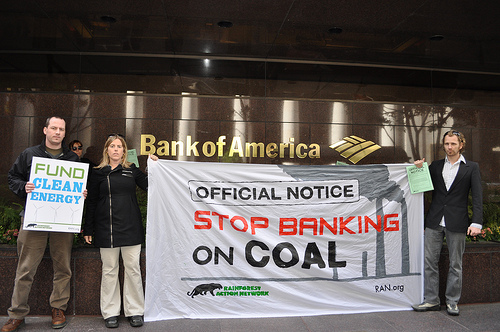 Bank of America today announced a new greenhouse gas emissions reduction commitment covering their office facilities.
Bank of America today announced a new greenhouse gas emissions reduction commitment covering their office facilities.
While I welcome Bank of America’s continued acknowledgment that reducing greenhouse gas (GHG) emission reductions is critical for combating the climate crisis, Bank of America must move quickly beyond commitments to reduce the carbon footprint of direct energy consumption by their offices and set ambitious targets to address the much larger carbon footprint of Bank of America’s financing of coal and other dirty energy. The climate footprint of Bank of America’s financing activities is estimated to be one hundred times larger than the size of its operational carbon footprint.
By profiling efforts to address the GHG emissions from their internal operations while quietly ignoring the GHG impacts of the billions of dollars that the bank provides each year for the extraction and burning of dirty fossil fuels like coal, Bank of America is at risk of misleading the public as to the true climate impacts of the company’s business.
As just one example, since 2009 Bank of America has provided financing for ten of the largest utilities operating coal-fired power plants, the biggest source of domestic GHG emissions, including participating in a $750 million bond issue for Duke Energy which is building the controversial Cliffside coal power plant. The 800 MW plant will emit over 240 million tons of CO2 over its expected “useful” lifetime, equivalent to the emissions from adding one million new cars to the road each year. Bank of America financing relationships in the U.S. power sector alone contribute to the release of more than 10% of total US emissions.
Bank of America should immediately commit to developing a more robust climate policy that includes: shifting the balance of financing in its utilities portfolio from dirty power sources, like coal, to cleaner, renewable energy.